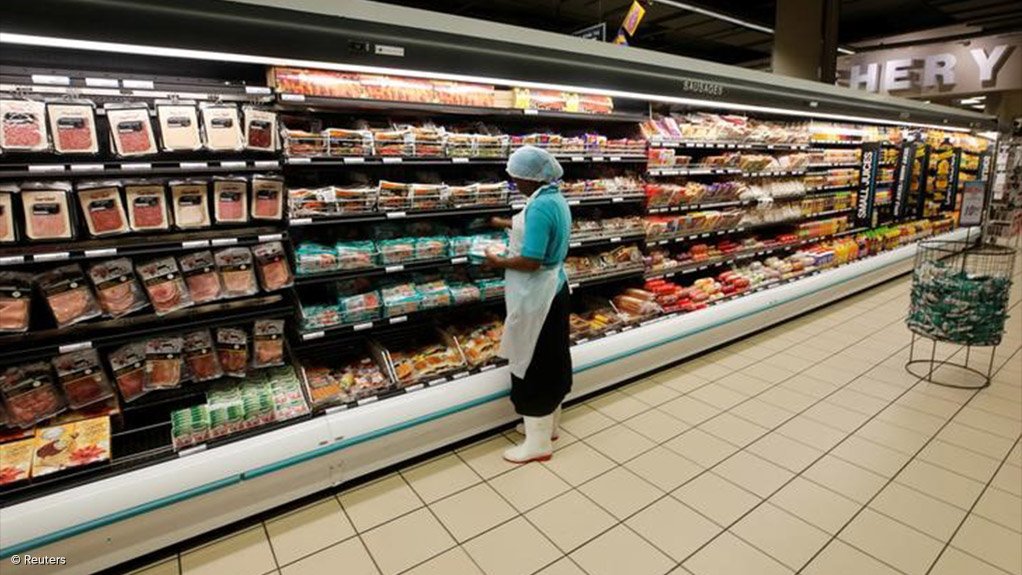Food and non-alcoholic beverage (NAB) inflation (henceforth to be referred to just as food inflation) in South Africa fell again in October, the Bureau for Food and Agricultural Policy (BFAP) think tank has highlighted, in its latest Food Inflation Brief. Last month, food inflation ran at 3.6%, year-on-year, while the equivalent figure for September was 4.7%. October was the eighth month in a row in which food inflation fell within the 3% to 6% inflation target bracket. But it was also the third consecutive month in which food inflation was higher than consumer price index (CPI) headline inflation, which was 2.8% (below the inflation target range).
Month-on-month food inflation in October was 0.4%, while the equivalent CPI headline inflation figure was -0.1%. Food inflation contributed 0.7 percentage points to the year-on-year CPI headline inflation figure, and 0.1 of a percentage point to the month-on-month figure.
Regarding external factors that significantly affected agriculture, the rand appreciated against the dollar by 7.8%, year-on-year, and by 0.4%, month-on-month. The CPI index for “Electricity and Other Fuels” rose by 11.4%, year-on-year, but registered no change, month-on-month, while that for “Fuel” was down, year-on-year, by -19.1%, and, month-on-month, by -5.3%.
The year-on-year inflation in the various food categories during October, from highest to lowest, were NAB (9.8%), sugar and sugar-rich foods (6.9%), fish (5.5%), bread and cereals (4.6%), dairy and eggs (4.1%), fruit (2.4%), vegetables (also 2.4%), and meat (0.5%), while oils and fats registered deflation of -0.3%. In month-on-month terms, the inflation rates were: fruit (5.3%), vegetables (2.7%), oils and fats (1%), sugar and sugar-rich foods (also 1%), NAB (again, 1%) and meat (0.3%), while month-on-month deflation was recorded by fish (-0.2%), dairy and eggs (also -0.2%) and bread and cereals (-0.5%).
In October, the only commonly purchased food item with year-on-year inflation equal to or greater than 30% was fruit juice concentrates. Found in the inflation band from 20% to just under 30% (in the order and categorisations of the BFAP) were pineapple, avocados; and, drinking chocolate. In the inflation band from 10% to just under 20% were rice, frozen chips, sweet potatoes; cabbage, carrots, frozen vegetables; papaya, apples; eggs; condensed milk; peanut butter, dried beans; coffee, Ceylon/black and Rooibos tea.
Those food items that experienced deflation in October (again in the order and groupings given by the BFAP) were pasta, wheat flour; cauliflower, onions, pumpkin; pears, bananas; beef (chuck, rump steak, mince, stew, corned beef, fillet); pork (bacon, chops, fillet, ribs); chicken giblets; gouda cheese; sunflower oil (including canola oil); and, sugar-rich foods.
Last month, the price of the BFAP’s Thrifty Healthy Food Basket (THFB) increased by 4%, or R366, year-on-year, and by 0.2%, or R7.24, month-on-month. The THFB is composed of 26 nutritionally-balanced food items, from all the food groups. It is designed to feed a reference family, of two adults and one older and one younger child, for a month. Buying the THFB in October would have taken 30.6% of the income of a low-income family, which is a slight deterioration over the figure for September, which had been 30.5%.
In its summary, the BFAP highlighted the influence of the rand/dollar exchange rate on South African agriculture. And the exchange rate was itself subject to a range of both domestic and international factors.
“The lower levels of food inflation that were sustained in recent months and particularly the decline in October 2024 benefitted from appreciation in the exchange rate, but in the aftermath of the US election results, the rand has subsequently weakened,” noted the BFAP. “While fundamental expectations are still for a stronger rand in 2025 compared to 2024, the short-term depreciation, combined with a surge in white maize prices over the past month and typical strength of festive season demand could see a small uptick in food inflation in the short term.”
Interest rate cuts will also stimulate demand. But electricity and labour costs are still “elevated”.
If the rand stabilised and strengthened, as, according to the fundamentals it should, then food inflation next year could be slightly less. Expected further cuts in the interest rate would again stimulate demand.
EMAIL THIS ARTICLE SAVE THIS ARTICLE ARTICLE ENQUIRY
To subscribe email subscriptions@creamermedia.co.za or click here
To advertise email advertising@creamermedia.co.za or click here











